Home »
Misc »
How to make jump higher in basketball
How to make jump higher in basketball
7 Exercises to Improve Jump and Agility
In basketball, having a strong vertical jump and flash-like agility isn’t an option, it’s a requirement. If you are having trouble with your vertical jump or agility, just practicing lay-ups and running laps around the court doesn’t mean you will get any better. When you want to jump higher and have insane side-to-side agility reflexes, you need to base your basketball skills training on the best and most proven exercises. Here is a basketball skills training program that must be in your weekly workouts for explosiveness.
7 Basketball Skills Training
1. Jump SquatsThis upgraded version of the traditional fitness exercise is sure to skyrocket your vertical jump. What’s more, it develops explosive power that will easily come in handy with your agility on the court. It activates the fast-twitch fibers of several major muscle groups in the lower body including the quadriceps, hamstrings, glutes, hip flexors, and calves.![]() If you want to jump higher, these are a must.
If you want to jump higher, these are a must.
How to Perform: Stand tall with your feet at shoulder-width distance. Keep your chest up as you bend at the knees and sit back as if you’re about to sit in a chair. Once your thighs reach parallel, push through your heels in an explosive jump straight up in the air. Land softly and immediately go into your next jump squat.
Ability Focus:
- Vertical Jump
- Explosive Power
2. Tuck Knee JumpsAnother great way to increase your explosive power, tuck knee jumps aren’t just a way for you to jump higher. They also demand lower body control to bring the knees up, touch the chest, and return before you land. This exercise will increase coordination, fast-twitch fiber control, and, of course, all-out power.
How to Perform: Stand tall with your chest up and feet at shoulder-width apart. Similar to the jump squat, you’ll start by bending slightly at the knees and driving your hips back only a little bit.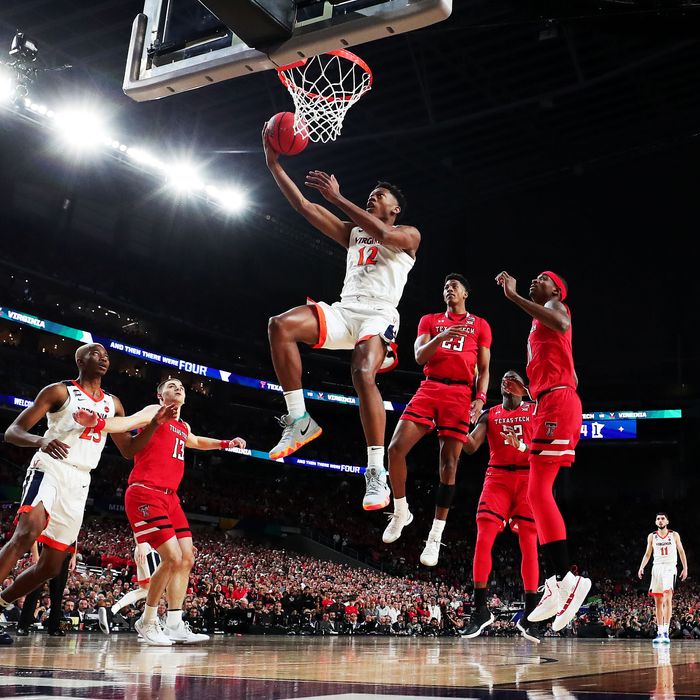 From here, jump straight up into the air. Simultaneously flex your pelvis and bring your knees up towards your chest. Reverse the motion and land softly. Take a pause to correct any posture issues then perform the next repetition.
From here, jump straight up into the air. Simultaneously flex your pelvis and bring your knees up towards your chest. Reverse the motion and land softly. Take a pause to correct any posture issues then perform the next repetition.
Focus:
- Vertical Jump
- Explosive Power
- Lower body control
3. Overhead Reaching JumpConsider this the next level of the jump squat. It will combine the explosive upward motion of the jump squat with a standard overhead reach that is all too common in your sport. You might find that you can jump higher with this variation of the exercise from the momentum of the overhead reach itself. We don’t need to tell you how important a strong overhead reach is for defense and catching passes.
How to Perform: Stand tall with your chest up and feet at shoulder-width apart. Similar to the two exercises above, you’ll start by bending slightly at the knees and driving your hips back only a little bit.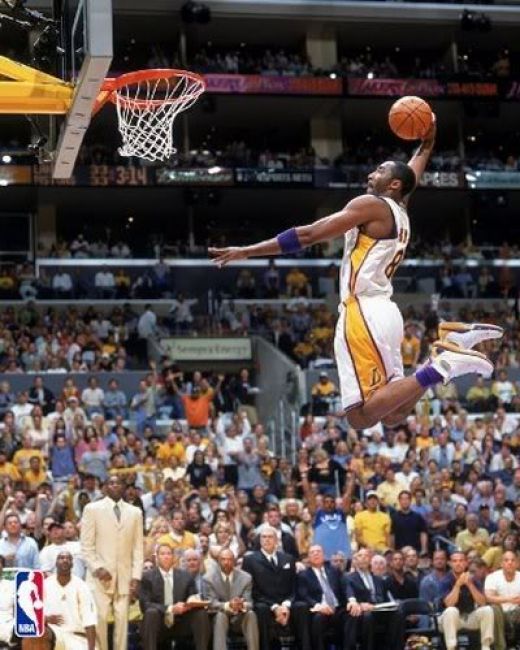 From here, jump straight up into the air. The big difference is that as you jump, you’ll simultaneously launch your hands skyward. As you descend, bring your hands into a defensive position close to the chest. Land soft, readjust your posture, and begin again.
From here, jump straight up into the air. The big difference is that as you jump, you’ll simultaneously launch your hands skyward. As you descend, bring your hands into a defensive position close to the chest. Land soft, readjust your posture, and begin again.
Focus:
· Vertical Jump
· Explosive Power
· Reaching ability
4. Single-Legged Cross JumpsTraining your body, regardless of the athletic goal, requires a balance of multi-joint and isolation movements. When you isolate a muscle group, you are strengthening its ability to perform a specific movement, which in turn will support the larger muscle group movements. In this case of improving your jumping ability and agility, you’ll want to perform single-legged cross jumps.
How to Perform: You will make the shape of a cross with thisjumping drill. Start on the left leg with the right leg tucked behind. With your chest up and core tight, leap forward with your left leg. While still facing forward, leap on your left leg to the left side and down. Now leap directly to the right, and finally back to the starting position. Switch legs and begin again.
While still facing forward, leap on your left leg to the left side and down. Now leap directly to the right, and finally back to the starting position. Switch legs and begin again.
Focus:
- Vertical Jump
- Explosive Power
- Agility
5. Wall Touches / Cone TapsLet’s focus more on the agility side of things, although explosive power will continue to be developed and improve your vertical jump. A classic athletic drill, wall touches or cone taps are great for developing those quick reflexes that will show in your improved agility.
How to Perform: Set up two cones a good distance apart from one another. Begin in the middle of the cones. If you’re using walls, stand between two walls. An indoor racquet ball court works best. Sprint to your right as fast as you can, tap the cone or wall, then immediately change direction and do the same on the other side. You can vary the distances for each set that you do.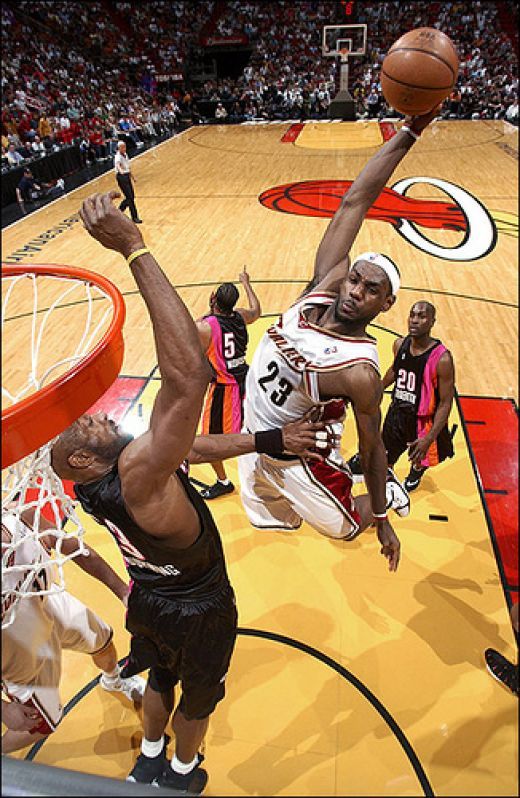 If you’re using cones, you can also add a second or third pair in a ladder-like arrangement, where you’ll have to sprint in a zig-zag fashion from side to side.
If you’re using cones, you can also add a second or third pair in a ladder-like arrangement, where you’ll have to sprint in a zig-zag fashion from side to side.
Focus:
6. Lateral Plyometric Box JumpsEveryone performs box jumps, even the Average Joes at the gym. For basketball players, box jumps are going to be incredibly important but there’s a twist: you’ll be jumping in a lateral fashion. Lateral box jumps will strengthen your hip flexors, which will benefit your side-to-side agility with an emphasis on sudden stop-and-go.
How to Perform: Arrange a steady box on the ground. Stand next to it with your left side facing the box. Keep your chest up and core tight as you slightly bend your knees. Explosively leap from the ground and completely on the box. You can choose to step down or lightly jump back into the starting position. Once you finish your prescribed repetitions, switch sides. Make sure you vary the height of the boxes during the workout, challenging yourself to increase the height.
Make sure you vary the height of the boxes during the workout, challenging yourself to increase the height.
Focus:
- Explosive Power
- Agility
- Jumping Ability
7. Uphill SprintsOur final workout is a classic that is used by athletes in every sport, but uphill sprints have a unique place in the basketball player’s workout. Uphill sprints dramatically improve your endurance levels, but more importantly for performance, they skyrocket your explosive power and lower body strength.
How to Perform: Begin with a warm-up before tackling sprints. Starting from the bottom of a hill, give yourself about 10 to 20 feet to work up your speed. Run for those 10 to 20 feet then once you hit the hill, go all out. Run as fast as you can until you reach the top of the hill, walk back down, rest for a few moments, and do it again. Do not sprint down the hill.
Focus:
- Explosive Power
- Lower Body Strength
Get More Training Drills
How to Double Your Vertical Jump for Basketball
Photo courtesy of Dirk Hansen
A good vertical jump is a valuable asset for all of your players to possess. It will help your team get more rebounds, blocks, and steals. It will also let a few (or many) players on your team dunk the basketball, which can lead to increasing your teams confidence, enthusiasm, and can it make the game a lot more fun!
It will help your team get more rebounds, blocks, and steals. It will also let a few (or many) players on your team dunk the basketball, which can lead to increasing your teams confidence, enthusiasm, and can it make the game a lot more fun!
If you are wondering if it is even possible to increase your vertical jump, you’ll be happy to know that with proper training, it is definitely something that can be improved.
I’ve developed this program over a number of years and have seen great improvements in the leaping ability of those who have followed it. I call it the Coach Mac Vertical Jump Program. Not a very creative name, is it? 🙂
I designed this program to be completely equipment free and also without the need for a large space. This program can be completed by anyone as long as you have a 2 x 2 meters of free space. Which we all do. So there can be no excuses for not completing the program.
Disclaimer: Obviously, I am not a doctor. If you or your players feel any pain in any of your joints during the program stop immediately and consult a doctor. You don’t want to make any previous injuries any worse.
You don’t want to make any previous injuries any worse.
Update for 2021!Best Vertical Jump Program in the WorldI have found what I believe to be the current best vertical jump program in the world, and it’s Vert Shock by Adam Folker.
While there are a ton of success stories of players using my program and making massive gains (check the comments if you don’t believe me), I’m also realistic about the extent of my knowledge on vertical jump training.
Adam Folker is a former NCAA Division I basketball athlete and professional basketball player. He connected with Justin ‘Jus Fly’ Darlington who currently holds the title as the World’s #1 Highest Dunker to create the best vertical jump program ever.
If you’re interested, check out his program below. I highly recommend it.
Vert Shock by Adam Folker
If you’re not interested in it that’s fine! You’ll still make a ton of gains using my workout. And I’d love you to use it! I made a promise to myself that I’d share the best information and products I know about and I’m keeping that promise.
And I’d love you to use it! I made a promise to myself that I’d share the best information and products I know about and I’m keeping that promise.
How to Measure Your Vertical JumpAs the saying goes, ‘You can’t improve what you can’t measure’.
The first step on your journey to increasing your vertical jump is to get a starting point of where your currently at so that you can track your progress.
Here’s how to do it;
Things you’ll need: Another friend to help you, a ladder, and either a permanent marker or chalk.
1. Find a wall or pole tall enough that when you jump you cannot touch the top.
2. Stand next to the pole or wall and extend your arm as high as you can above your head. This is your standing reach. Have your friend mark your standing reach with either a piece of chalk or a permanent marker.
3. Now from a standing start, jump and touch as high up the wall or pole as you possibly can. You’ll need your friend to watch and see where you touch so that there’s no confusion. Get your friend to climb the ladder and mark where you were able to reach on the wall.
You’ll need your friend to watch and see where you touch so that there’s no confusion. Get your friend to climb the ladder and mark where you were able to reach on the wall.
4. Measure the distance between your standing reach and your jumping reach. This is your current vertical jump.
Important Information on the Coach Mac Vertical Jump ProgramWarming UpBy reading my previous article on stretching, you’ll learn that it is important to warm-up your muscles first before stretching or performing any strenuous physical activity. I recommend jumping rope for a couple of minutes to warm-up and increase the blood flow to your muscles.
PhasesThe program is broken up into three different phases consisting of four weeks each. This is because as you continue through the program your muscles will adapt to the intensity of the workout, therefore we need to keep increasing the workload in order to continue increasing your vertical jump.
FrequencyPerform the routine every second day to give your body a days rest in-between workouts. This means that on week one you’ll be training 4 times a week, week two you’ll be training 3 times per week, and on week three you’ll be training 4 times per week. That ends up being 11 workouts per phase for a total of 33 workouts in the program. Also, during this program you will be taking one week off between each phase to let your body completely recover. You need to give your muscles time to fully repair in order to grow stronger and more explosive.
Rest IntervalsOne minute rest in-between all sets. If you can, try to keep a stop watch with you when you’re doing these workouts. If you don’t have one my players have found it convenient to use the stop watches located on their mobile phones.
Record Your ProgressKeep track of how much progress you’ve made at the end of each rest week. It’s going to be hard for your players, but stress that if they really want to see results it’s best that they wait until the end of the rest week. We know how hard it is for players to be patient!
We know how hard it is for players to be patient!
Exercises:If you have any trouble understanding my descriptions of the exercises, YouTube them to watch a video of the exercise being performed.
Jumping Rope – A skipping rope is the only piece of equipment involved in the program. If you don’t have one a piece of rope will do just fine. If you don’t have a piece of rope either jumping up and down on the spot without much bending in the knees will achieve a similar result. Jumping rope involves holding a rope with both hands and swinging it around your body continuously.
4-Corners – Involves you imagining 4 dots in a square shape about 15 – 20 inches apart. To complete 4-corners you hop around the square in a clockwise direction landing on each dot for the required number of repetitions. 4 jumps and completing the square equals one repetition.
Single-Leg 4-Corners – Exactly the same as 4-Corners except performed on one leg.
Slow-Motion Squats – Involves standing with your feet shoulder width apart. From this position slowly lower down until you are in a deep squat making sure your heels are flat on the ground. Hold for 2 seconds before slowly rising back to the starting position. The descent and rise should each take 4 seconds to complete. Throughout the entire exercise make sure to keep your head up and your back straight.
Tuck Jumps – Tuck jumps involve descending into a comfortable squat and then jumping as high as possible and bringing your knees to your chest.
High-Reach Jumps – Are similar to tuck jumps, but instead of brining your knees to your chest, you just reach as high as you can. This is done best under a basketball ring or near a wall so that you can tell how much lower your reach becomes as you fatigue. Try to reach the same height through all repetitions. if you don’t have anything to measure against, that’s fine. Just jump as high as you can each repetition.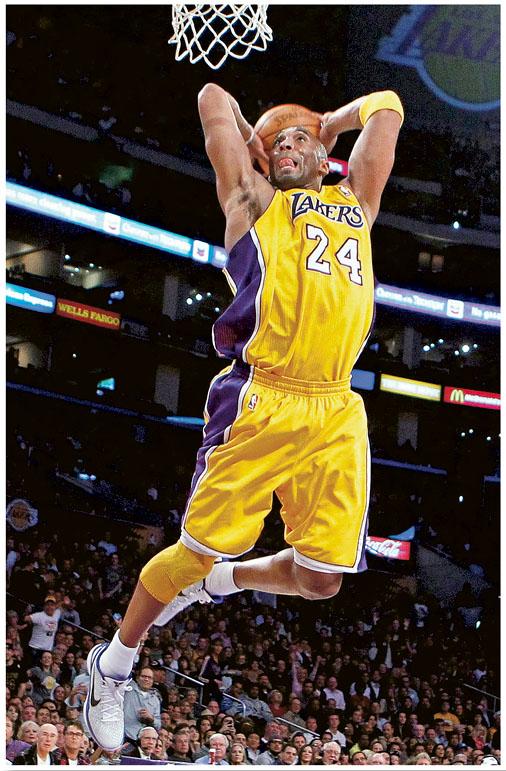
Lateral Jumps – Lateral jumps are performed best with over a line or a stick. They involve standing parallel to the line on one side and then quickly jumping sideways back-and-forth over the line. Over and back equals one repetition.
Single-Leg Lateral Jumps – Exactly the same as lateral jumps except performed on one leg.
Alternating Lunge Jumps – From a normal standing position, take one step forward with your right foot and one step backwards with your left foot. This is your starting position. From this position, jump as high as you can in the air and switch leg positions.
Straight Leg Calf Jumps – Without bending your knees, jump up and down in the same spot. You won’t get very high off the ground and it will be the ankle doing all the movement which will work the calf muscle.
Toe Raises – Stand regularly, then raise up onto the tips of your toes. Lower back down. Don’t rock up and down, do it slowly (not too slowly) but steadily.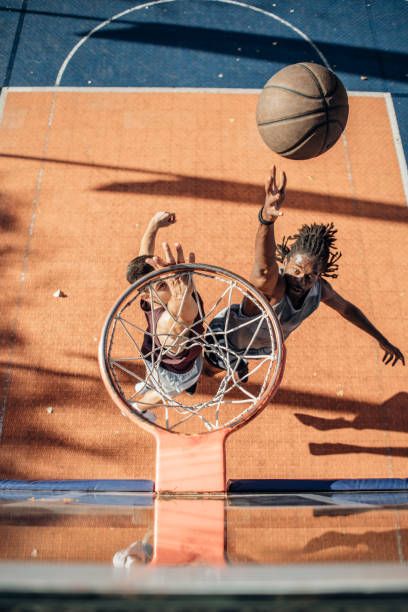 This is improved by using stairs if you have access to them. Alright, enough talk. Here’s the program you’ve all been waiting for.
This is improved by using stairs if you have access to them. Alright, enough talk. Here’s the program you’ve all been waiting for.
Coach Mac Vertical Jump ProgramPhase 1 – Weeks 1 – 31. Jumping Rope – 2 minutes.
2. Stretching
3. Jumping Rope – 2 minutes.
4. Slow Motion Squats – 3 sets of 10 repetitions.
5. Lateral Jumps – 3 sets of 20 repetitions.
6. Alternating Jump Lunges – 3 sets of 10 repetitions.
7. Tuck Jumps – 3 sets of 8 repetitions.
8. Toe Raises – 3 sets of 20 repetitions.
Week 4 – Rest.
Phase 2 – Weeks 5 – 71. Jumping Rope – 2 minutes.
2. Stretching
3. Jumping Rope – 3 minutes.
4. Slow Motion Squats – 3 sets of 10 repetitions.
5. 4-Corners – 3 sets of 12 repetitions.
6. Single-Leg Lateral Jumps – 3 sets of 15 repetitions.
7. Alternating Jump Lunges – 3 sets of 15 repetitions.
8. High Reach Jumps – 3 sets of 8 repetitions.
9. Straight-Leg Calf Jumps – 3 sets of 30 repetitions.
Week 8 – Rest.
Phase 3 – Weeks 9 – 111. Jumping Rope – 2 minutes.
2. Stretching
3. Jumping Rope – 4 minutes.
4. Slow Motions Squats – 3 sets of 10 repetitions.
5. Single-Leg 4-Corners – 3 sets of 10 repetitions.
6. Single-Leg Lateral Jumps – 3 sets of 20 repetitions.
7. Alternating Jump Lunges – 3 sets of 20 repetitions.
8. Tuck Jumps – 3 sets of 8 repetitions.
9. Straight-Leg Calf Jumps – 3 sets of 40 repetitions.
Week 12 – Rest.
I have found what I believe to be the current best vertical jump program in the world, and it’s Vert Shock by Adam Folker and Justin ‘Jus Fly’ Darlington.
Important Update! – I have been receiving a few emails/comments on players tracking their jump during the course of their program. Please understand that what you are doing when completing a jump program is breaking down the muscle. You aren’t going to see improvements mid-week because the muscle hasn’t healed properly.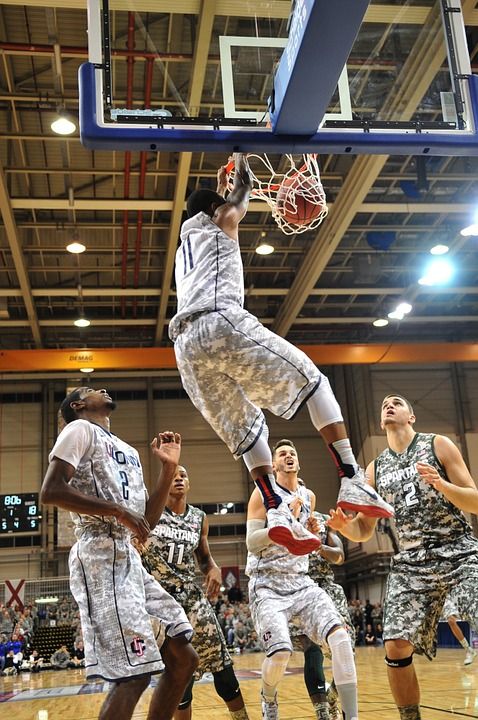 That’s why I suggest only checking how much you’ve improved at the end of each rest week. Rest is just as important as the routine.
That’s why I suggest only checking how much you’ve improved at the end of each rest week. Rest is just as important as the routine.
That’s it! It’s as simple as that.
I’ve seen players make massive gains using this exact program so don’t hesitate giving it to your players to help them improve.
They’ll love it too. Who doesn’t want to dunk a basketball?
Let me know how the program works for your players. I’d love to hear some of the results.
– Coach Mac
How to increase the jump? | Basketball coach
How to increase the jump? Probably, this question was asked by everyone who plays basketball. Watching NBA stars during the dunk contest or directly in the game, we can only freeze during each take-off and scream with delight at the end of the pirouette. They really can fly...can we?
The importance of increasing the jump for a basketball player is undeniable. Jumping high gives you a huge range of possibilities: it’s easier to take a shot, get away from a defender’s block shot, grab a rebound, defend more tightly when an opponent’s shot is thrown, and so on. Of course, a jump is an undeniable trump card in the game, so all ballers, without exception, are tormented by the question: how to increase the height of their jump?
Of course, a jump is an undeniable trump card in the game, so all ballers, without exception, are tormented by the question: how to increase the height of their jump?
Let's start with the basic concepts of a jump. In basketball, there are 2 types of jumps: with one foot and with two. The first is mainly performed during the execution of a double step, the second - both from a jump and from a place. It has always been believed that jumping from one foot (after movement) is higher. This phenomenon can be explained by the fact that when performing a jump from one leg after a double step, the player can transform the energy of running into the energy of a jump. You can’t jump high from a place with one foot, but from two - please. In addition, a jump from two legs will also always be higher if it is performed after a jump, and not from a place, by transferring the energy of horizontal movement (running) into a vertical one. The converse is also true. Which jump to use at a certain game moment is a purely individual decision for each player or episode.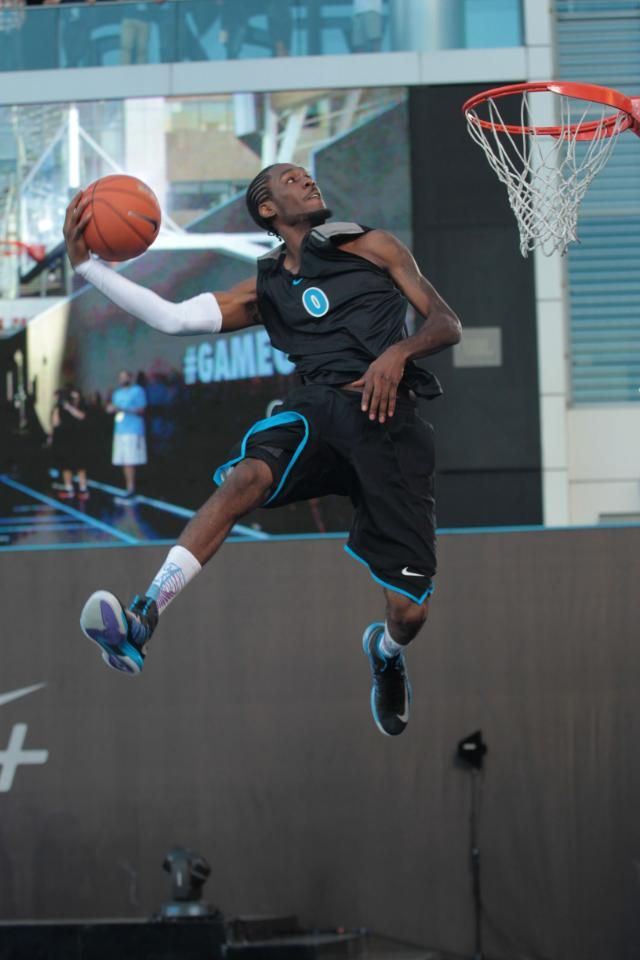 It is useful to be able to jump sharply and quickly to the maximum height.
It is useful to be able to jump sharply and quickly to the maximum height.
Many muscles of the body are involved in the process of jumping. They can be divided into 3 groups: dorsal , femoral and calf . The explosive power of these muscles in the first place, as well as their endurance, largely determines the ability of a basketball player to jump high. The answer to the age-old question “how to increase the jump in basketball” is brewing by itself: develop these muscles. To increase your jump, you need to both separately pump these muscle groups by performing certain exercises, and use them in combination (constantly work out jumps similar to those used in the game). At the moment, there are more than a hundred different exercises that in one way or another contribute to increasing the high jump. The purpose of this article is not to program you to do exercise A 30 times 3 times a week for two sets, and exercise B some more times. Our task is to give you a holistic view of the jump increase strategy, to warn you about some important nuances and give important advice. Of course, at the end of the article you will find certain materials that we recommend for training.
Our task is to give you a holistic view of the jump increase strategy, to warn you about some important nuances and give important advice. Of course, at the end of the article you will find certain materials that we recommend for training.
More than eight years of experience in constant training and playing of our team allows us to share with you the following. As we have already noted, it is necessary to perform both a separate muscle pump (step-ups for calves, barbell squats for the thigh muscles and tilts for the back, for example), and use all the muscles at the same time. The latter is possible either directly in the game, or when simulating a game episode in training, but performing absolutely similar jumps. To be honest, you can increase your jump if you constantly jump. Jumping with all your might, as if your opponent is throwing a buzzer-beater, and you are defending yourself; like dunking on a 3-40 hoop. Constantly jumping as hard as you can will really add height to your jump.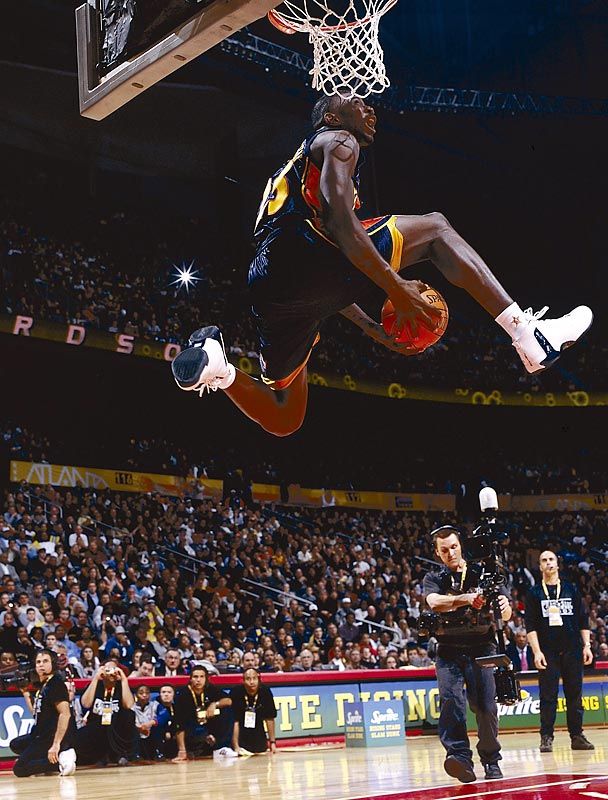 In training, be sure to devote some time to simulating a game situation and performing 10-20-50-100-500 (depending on your desire and body capabilities) jumps with all your might. Believe me, it will consistently bring results. Combine both individual muscle pumps and jumps.
In training, be sure to devote some time to simulating a game situation and performing 10-20-50-100-500 (depending on your desire and body capabilities) jumps with all your might. Believe me, it will consistently bring results. Combine both individual muscle pumps and jumps.
However, a very important point is muscle rest . This is especially true for the calf muscles. Sometimes, two days between workouts is not enough for proper rest and recovery. This is often caused by the fact that the next day the calves still do some work (walking is also work), so they require more time to recover. There is a situation of muscle clogging, so no, they go into a stage of constant overstrain. In addition, constant exhausting muscle pumps (without proper rest) build muscle endurance, but do not add height to the jump.
What to do? Properly plan your own workouts and games in order to give rest and the opportunity to fully recover the calf muscles. We don't force you to change your team's training schedule, no! Just know that if you are seriously working on increasing your jump height, 5-7 days without calf stress can be quite beneficial.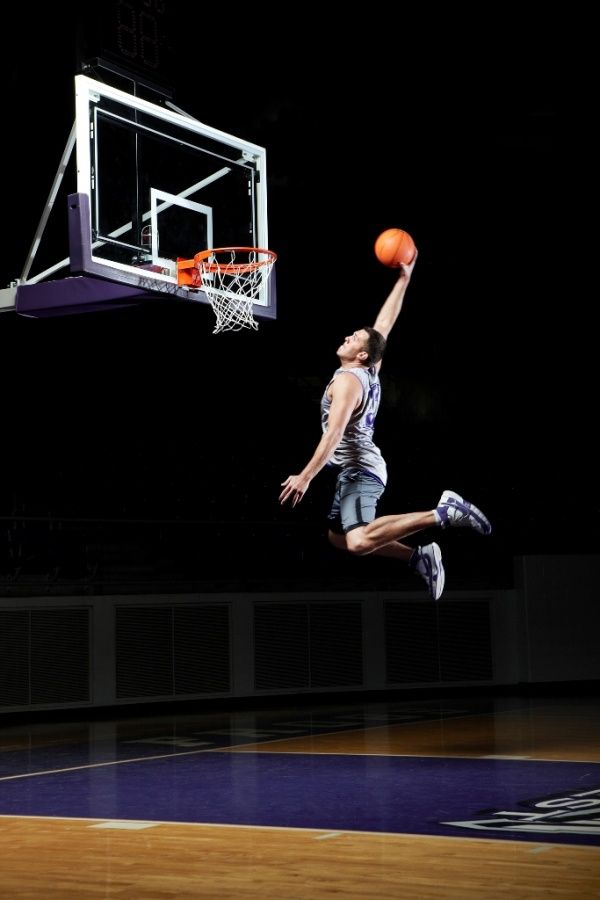 We know from our own experience that after a basketball vacation (for example, a trip to the sea), the ball can fall out of your hands, fly past even from under the basket, but how you jump! Rested muscles are ready for new heights, training and work.
We know from our own experience that after a basketball vacation (for example, a trip to the sea), the ball can fall out of your hands, fly past even from under the basket, but how you jump! Rested muscles are ready for new heights, training and work.
programs for increasing the jump deserve special attention. Our team recommends that you treat various advertised programs critically. More often than not, these programs offer multiple drills without considering the individual player, current jump height, or basketball schedule. Most of these programs do not allow the muscles to fully recover, hammering them and, most importantly, develop not strength, but endurance (although some provide for proper rest). But they have bright headlines, eloquent promises to gain +20 cm in a couple of weeks. We do not claim that they are useless. By doing AirAlert 2 somehow, already in the second week, a significant increase in the jump was felt, but progress stopped there. Already in the third week, the stage of complete overstrain of the muscles began.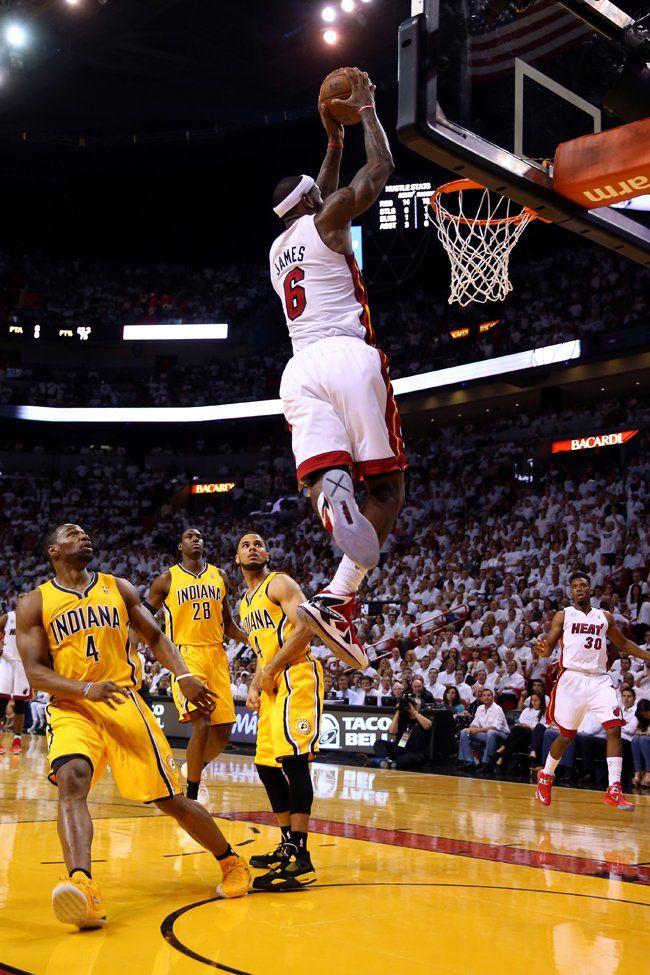 In addition, many athletes complain that at a certain stage of the implementation of some programs, pain in the knees appears. Approach jump training wisely. You can learn a lot of useful exercises from the programs, but any technique should definitely be adapted to suit yourself, and not mindlessly hammer out 400 jumps a day.
In addition, many athletes complain that at a certain stage of the implementation of some programs, pain in the knees appears. Approach jump training wisely. You can learn a lot of useful exercises from the programs, but any technique should definitely be adapted to suit yourself, and not mindlessly hammer out 400 jumps a day.
Finally, here are some exercises that will really help you to increase your jump height. Never forget to warm up and stretch before your workout. Pay attention to the rises on the toes - a very useful exercise for the calves (by the way, from the AirAlert program).
You can do this exercise in different ways (on the stairs, on the wall bars in the gym, on the encyclopedia at home). The main thing is to lift your own body solely due to the calf muscles. You can alternate approaches: on the left - right - two legs. 20-30 times per approach is enough.
Another very effective exercise is the squat with extra weight - dumbbells or a barbell. Periodically, you can use weights and train (play).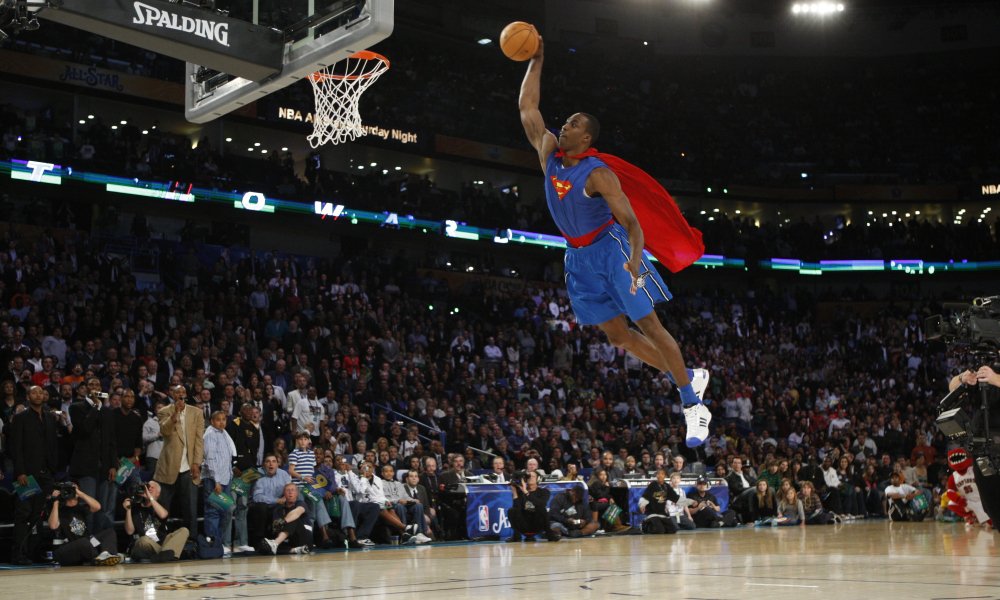 Working with weights will allow, in addition to jumping, to develop speed, agility and coordination in the game. However, do not abuse the work with weighting agents, so as not to damage the ankle and knee joints. I would like to note that for white basketball players, the main way to achieve a steep jump is weightlifting exercises. For blacks, things are different - they just need to jump, and the effect will be much more noticeable due to the physical characteristics of the body. Therefore, feel free to take a subscription to the rocking chair and plan a training program (see the section "Physical training" on our website)
Working with weights will allow, in addition to jumping, to develop speed, agility and coordination in the game. However, do not abuse the work with weighting agents, so as not to damage the ankle and knee joints. I would like to note that for white basketball players, the main way to achieve a steep jump is weightlifting exercises. For blacks, things are different - they just need to jump, and the effect will be much more noticeable due to the physical characteristics of the body. Therefore, feel free to take a subscription to the rocking chair and plan a training program (see the section "Physical training" on our website)
Summing up : jumping is an important component of a player's individual skill. To increase the jump, it is necessary to pump the calf, femoral and dorsal muscles separately, both with the help of jumps and weightlifting exercises. It is also necessary to directly jump with maximum impact in the game and in training. To constantly increase the jump, the muscles need time to fully recover.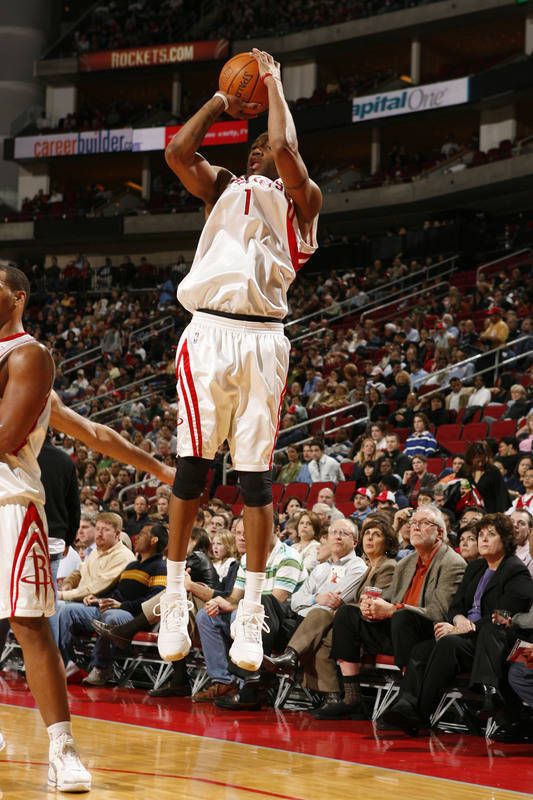 You should always adapt the jump training scheme for a specific program for yourself, taking into account all the nuances.
You should always adapt the jump training scheme for a specific program for yourself, taking into account all the nuances.
Continue training with an online basketball coach!
How to jump higher in basketball
High-level basketball is played beyond one's ability. Even hybrid point guards like Russell Westbrook can be the authority in today's NBA. Even though height and arm span play a leading role, young basketball players need to improve their vertical jump.
Although jumping ability may not be as high as strength, it can be improved through targeted exercises and training. Basketball players can reap the rewards of a higher vertical jump when it comes to dribble, rebound and defense, just to name a few.
We believe that young athletes can learn to jump higher through technique, movement understanding, strength training and functional training.
Vertical Jump vs. Basketball Jump Ability
Before we start improving vertical jump for basketball players, we must first define what vertical is and how jump ability and vertical jump are not exactly the same.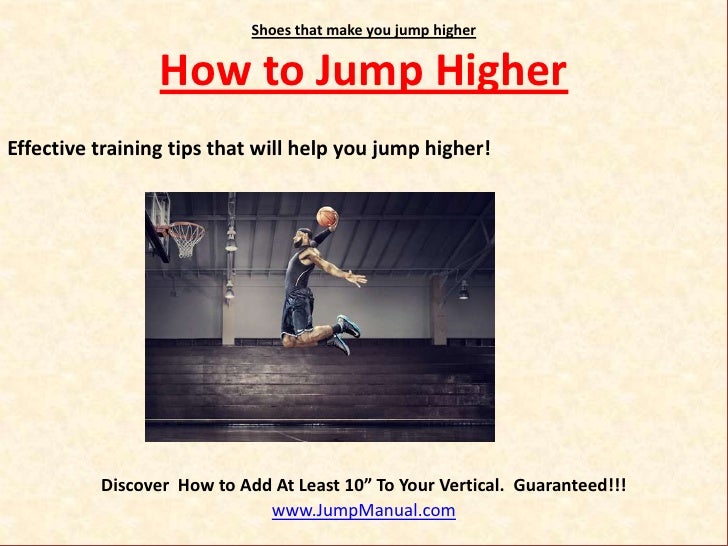
Vertical jump, more commonly known as vertical jump, is the ability of a person to jump directly from a standing position with both feet on the ground. There can be no forward movement or movement of the legs going straight up.
In real basketball, players rarely stand still and jump as high as possible on two legs. Most likely, basketball players will move in some direction and jump with some kind of momentum.
It is important to distinguish that a higher tested vertical does not always correspond to a higher jump on the basketball court.
One-foot vs. two-foot jumps for basketball
As an extension of this point, young basketball players should train to improve both one-foot and two-foot jumps.
Two-leg jumps are traditionally performed in a basketball game for bouncing balls and getting bounces. It also means jumping and blocking from a solid defensive base. From a relatively stationary position, jumping with two legs is more effective.
One foot jumping is seen more often when the player goes under the basket. These are jumps that are used on a poster hanging on your bedroom walls. Michael Jordan and Dr. Jay jumped out of the free throw line on one leg, using the momentum and power of their running to lift themselves into the air.
These are jumps that are used on a poster hanging on your bedroom walls. Michael Jordan and Dr. Jay jumped out of the free throw line on one leg, using the momentum and power of their running to lift themselves into the air.
Strength training to improve vertical jump in basketball
Traditional strength training can certainly allow basketball players and other athletes to jump higher. Jumping ability comes from fast muscle fibers. These muscle fibers can be developed from concentrated strength training. These exercises should be performed with good form and emphasis on speed and explosion.
Kettlebell Swing - Not normally thought of as a bouncing motion, kettlebell swing actually mimics the explosion of a basketball jump very closely. The hips are loaded and all the power comes from the bent knee, the position of the hips back.
Box Squat - The traditional back squat and front squat allow for some "bounce" at the bottom of the movement. Instead, try box squatting to eliminate that stretch reflex.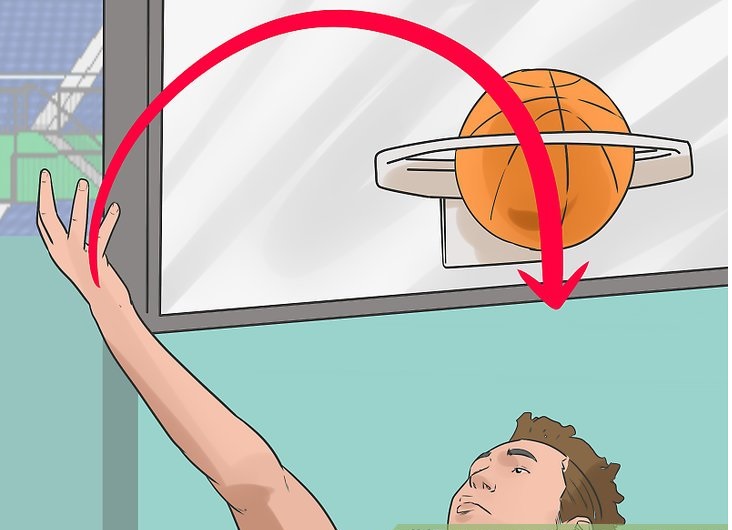 For maximum results, keep your feet in a natural, athletic, jumping position. Keep your back tight, chest up, pause at the bottom and explode with the weight.
For maximum results, keep your feet in a natural, athletic, jumping position. Keep your back tight, chest up, pause at the bottom and explode with the weight.
Trap Bar Rows or Traditional Rows - These movements are great for overall strength, muscle building and developing fast muscle fibers. Any variation of the pull will load the posterior chain, strengthen the athlete's core, and the gain in strength naturally translates into a vertical jump.
Jump Higher with Dynamic Training
Traditional strength training is not the only way to improve your basketball vertical jump. More functional, unweighted moves can also increase your explosiveness and lead to a higher jump.
Sit Box Jumping - Basketball players can start by sitting on a box or bench, allowing their knees to rest at about 90 degrees. Without leaning back or using momentum, athletes must explode from a seated position and jump onto a box in front of them.
Obstacle Jumping - This exercise can be performed in a variety of ways, but essentially involves basketball players jumping over an obstacle or obstacles. Some youth players will react to single repetitive hurdle jumps, while others prefer to jump over multiple hurdles in a row.
Some youth players will react to single repetitive hurdle jumps, while others prefer to jump over multiple hurdles in a row.
Single Leg Jumps - Single leg jumps are useful for a number of reasons. They strengthen the smaller, more specific muscles in the calves and thighs that stabilize basketball players' bodies as they jump. They also improve coordination and comfort level when jumping from one leg.
Increase your vertical jump with Hustle Training
Hustle Training - Created as a tool for coaches and players to take advantage of professional training and training, Hustle Training is quickly becoming one of the most popular sports training apps available. Based in Pittsburgh, Pennsylvania, this growing startup maximizes your performance potential through fundamental best practices with drills and workouts developed by professional players, college coaches, and seasoned coaches.
We remind you that the confidence of your game directly depends on the sports equipment in which you play!!! You can buy a basketball uniform on the website of the official representative of Macron in Ukraine: https://macronstore.